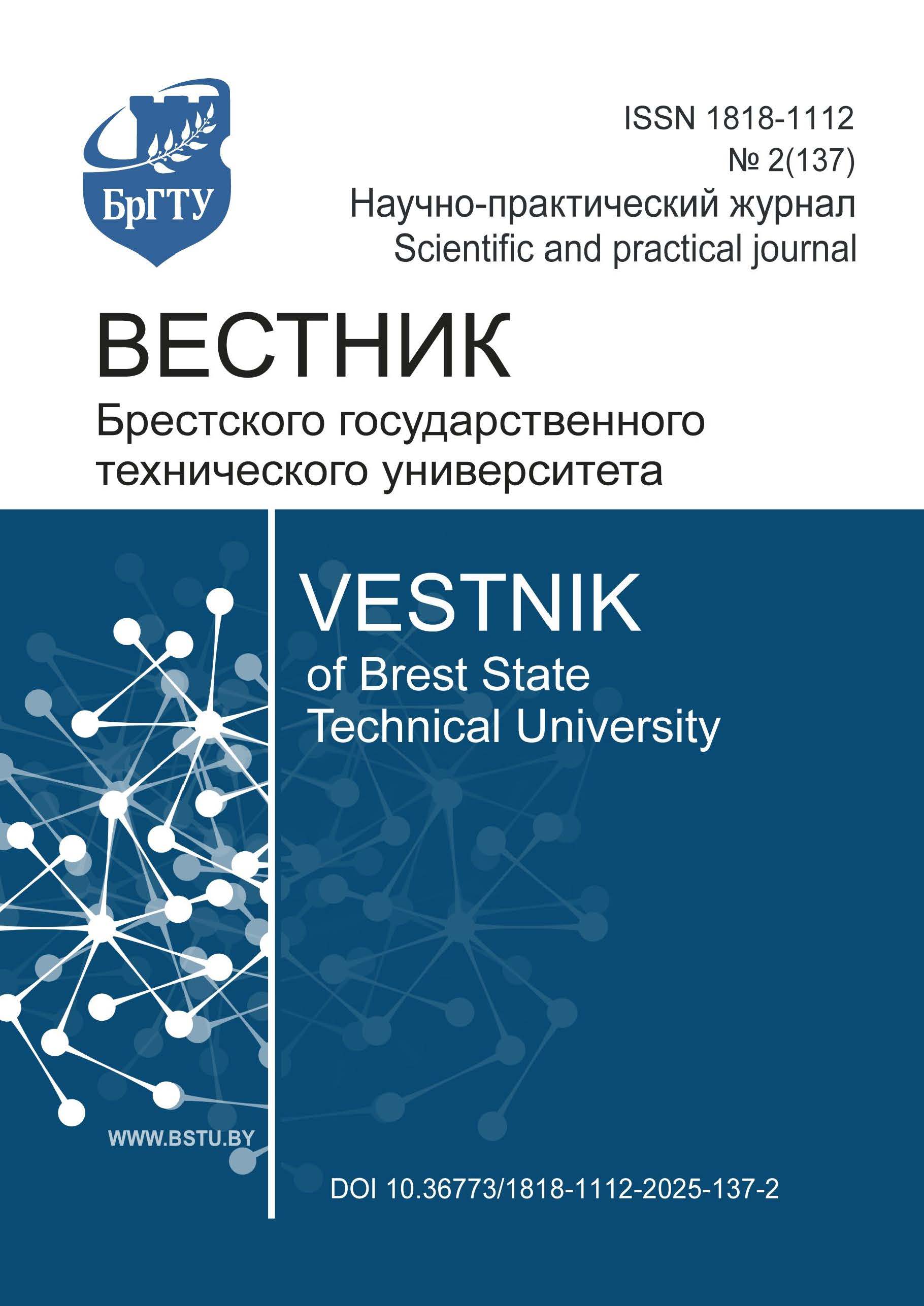STRUCTURE AND PROPERTIES OF DLC-N COATINGS OBTAINED BY CATHODIC ARC DEPOSITION WITH ION ASSISTANCE
DOI:
https://doi.org/10.36773/1818-1112-2025-137-2-50-55Keywords:
diamond-like carbon, cathodic arc deposition, ion-assisted deposition, coating structure, phase composition, hardness, electrical resistanceAbstract
The ability of nitrogen to easily integrate into the diamond structure, replacing carbon atoms, makes it the most suitable element for modifying the mechanical, tribological and electrical properties of diamond-like carbon films and coatings. In this paper, we study the effect of the nitrogen state on the phase composition, structure and properties of diamond-like carbon coatings obtained by cathodic arc deposition. During the deposition of diamond-like carbon coatings, nitrogen was supplied to the vacuum chamber both in molecular form and in ionized form from an ion-beam source. It was found that a significant increase in the nitrogen content in the diamond-like carbon coating is observed in the case of its doping with nitrogen in the ionized state. The presence of nitrogen in the structure of diamond-like carbon leads to the formation of C-N chemical bonds in the configuration with both sp2 and sp3 bonded to carbon atoms. An increase in the energy of nitrogen ions stimulates an increase in the content of sp2 hybridized carbon atoms in the formed coatings with the structure of aromatic rings. It was found that the obtained amorphous coatings DLC-N contain three- and four-coordinated carbon atoms, and the number of four-coordinated carbon atoms and the degree of disorder in three-coordinated carbon atoms depend on the conditions of coating deposition. The obtained coatings have a high hardness of up to 4500 kgf/mm2, which allows them to be classified as superhard materials. The presence of nitrogen in the coating allows changing its specific electrical resistance over a wide range, as well as tribological characteristics under dry friction conditions. The obtained thin-film material is promising for obtaining structures with the required electrical conductivity, including for the manufacture of ionizing radiation detectors.
References
Nitrogen-doped CVD diamond: Nitrogen concentration, color and internal stress / A. M. Zaitsev, N. M. Kazuchits, V. N. Kazuchits [et al.] // Diamond and Related Materials. – 2020. – Vol. 105. – Paper 107794.
Effects of nitrogen incorporation on N-doped DLC thin film electrodes fabricated by dielectric barrier discharge plasma: Structural evolution and electrochemical performances / M. Nilkar, F. E. Ghodsi, S. Jafari [et al.] // Journal of Alloys and Compounds. – 2021. – Vol. 853. – Paper 157298.
Nitrogen-doped diamond-like carbon as optically transparent electrode for infrared attenuated total reflection spectroelectrochemistry / N. Menegazzo, M. Kahn, R. Berghauser [et al.] // Analyst. – 2011. – Vol. 136. – P. 1831–1839.
Nitrogen doping for adhesion improvement of DLC film deposited on Si substrate by Filtered Cathodic Vacuum Arc (FCVA) technique / D. Bootkul, B. Supsermpol, N. Saenphinit [et al.] // Applied Surface Science. – 2014. – Vol. 310. – P. 284–292.
Liu, A. Y. Prediction of new low compressibility solids / A. Y. Liu, M. L. Cohen // Science. – 1989. – Vol. 245. – P. 841–845.
Корсунский, Б. Л. На пути к нитриду углерода / Б. Л. Корсунский, В. И. Пепекин // Успехи химии. – 1997. – № 11. – С. 1003–1014.
Muhl, S. A review of the preparation of carbon nitride films / S. Muhl, J. M. Me´ndez // Diamond and Related Materials. – 1999. – Vol. 8. – P. 1809–1830.
Zhang, Y. Crystalline carbon nitride films formation by chemical vapor deposition / Y. Zhang, Z. Zhou, H. Li // Applied Physics Letters. – 1996. – Vol. 68. –P. 634–636.
Freire, F. L. Amorphous hydrogenated carbon-nitrogen films deposited by plasma-enhanced chemical vapor deposition / F. L. Freire // Japan Journal of Applied Physics. – 1997. – Vol. 36, N 7B. – P. 4886–4892.
Structural investigation of two carbon nitride solids produced by cathodic arc deposition and nitrogen implantation / A. R. Merchant, D. G. McCulloch, D. R. McKenzie [et al.] // Journal of Applied Physics. – 1996 – Vol. 79. – P. 6914–6919.
Amorphous carbon and carbon nitride films prepared by filtered arc deposition and ion assisted arc deposition / J. P. Zhao, X. Wang, Z. Y. Chen [et al.] // Materials Letters. – 1997. – Vol. 33. – P. 41–45.
Preparation of CNx films by ion beam assisted filtered cathodic arc deposition / C. Spaeth, M. Kühn, U. Kreissig, F. Richter // Diamond and Related Materials. – 1997. – Vol. 6. – P. 626–630.
Hartmann, J. Characterization of carbon nitride produced by high-current vacuum arc deposition / J. Hartmann, P. Siemroth, J. Schultrich // Journal of Vacuum Science Technology A. – 1997. – Vol. 15. – P. 2983–2987.
X-ray diffraction studies of the effects of N incorporation in amorphous CNx materials / J. K. Walters, M. Kuhn, C. Spaeth [et al.] // Journal of Applied Physics. – 1998. – Vol. 83. – P. 3529–3534.
Optical emission spectroscopy of the nitrogen arc in an arc-heated beam source used for synthesis of carbon nitride films / N. Xu, Y. Du, Z. Ying [et al.] // Journal of Physics D: Applied Physics. – 1997. – Vol. 30. – P. 1370–1376.
Optical and mechanical properties of amorphous CN films / S. Lee, S. Jin Park, Soo-ghee Oh [et al.] // Thin Solid Films. – 1997. – Vol. 308–309. – P. 135–140.
Modeling studies of amorphous carbon / D. Beeman, J. Silverman, R. Lynds, M. R. Anderson // Physics Review B. – 1984. – Vol. 30, Iss. 2. – P. 870–875.
Dillon, R. O. Use of Raman Scattering to Investigate Disorder and Crystallite Formation in As-Deposited and Annealed Carbon Films / R. O. Dillon, J. A. Woolam, V. Katkanant // Physical Review B. – 1984. – Vol. 29. – P. 3482–3489.
Preparation of carbon nitride thin films by ion beam assisted deposition and their mechanical properties / M. Kohzaki, A. Matsumuro, T. Hayashi [et al.] // Thin Solid Films. – 1997. – Vol. 308–309. – P. 239–244.
Preparation and properties of high density, hydrogen free hard carbon films with direct ion beam or arc discharge deposition / J. P. Hirvonen, J. Koskinen, R. Lappalainen, A. Anttila // Materials Science Forum. – 1990. – Vol. 52. – P. 197–216.
Downloads
Published
How to Cite
Issue
Section
License

This work is licensed under a Creative Commons Attribution-NonCommercial 4.0 International License.
The work is provided under the terms of Creative Commons public license Attribution-NonCommercial 4.0 International (CC BY-NC 4.0). This license allows an unlimited number of persons to reproduce and share the Licensed Material in all media and formats. Any use of the Licensed Material shall contain an identification of its Creator(s) and must be for non-commercial purposes only. Users may not prevent other individuals from taking any actions allowed by the license.










